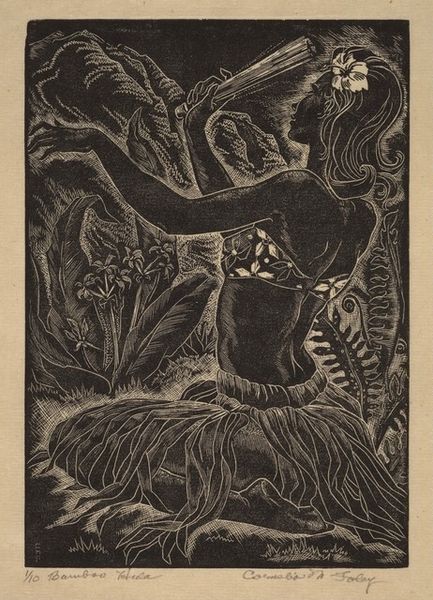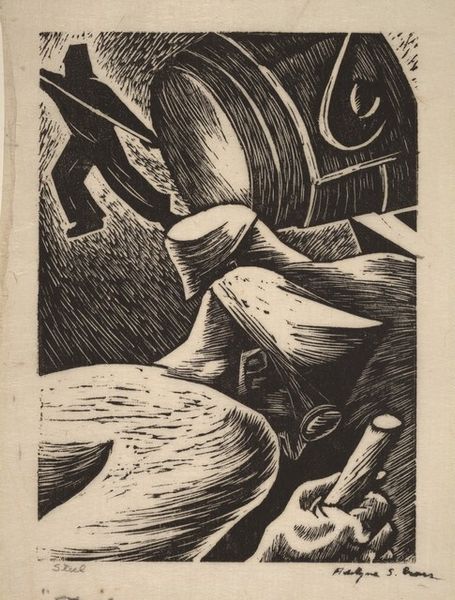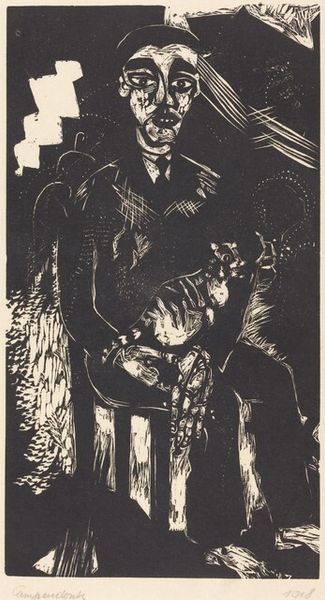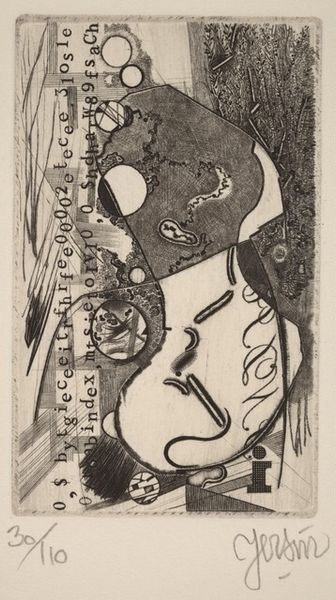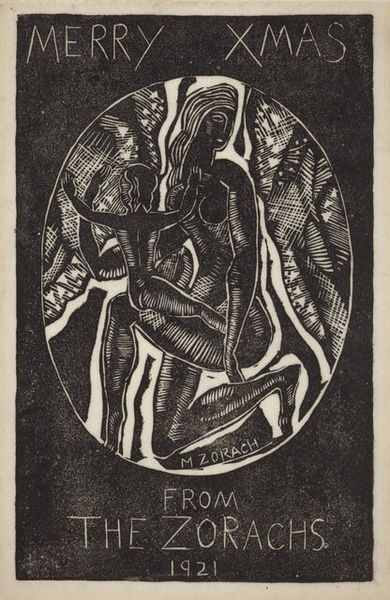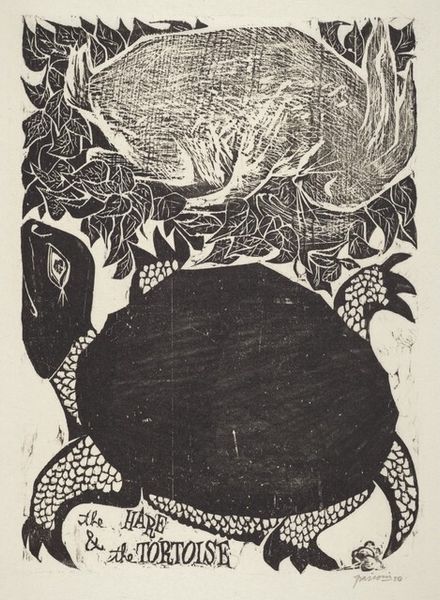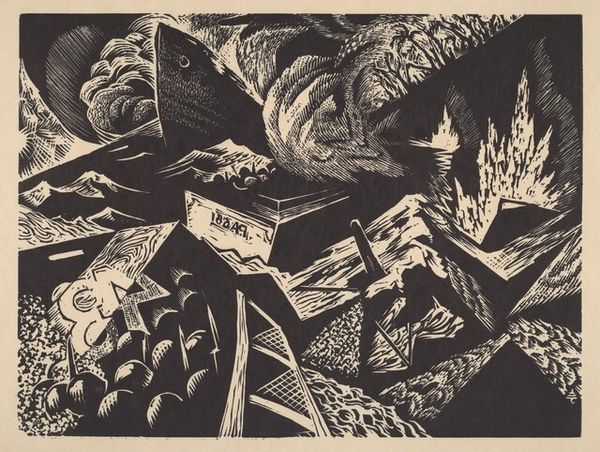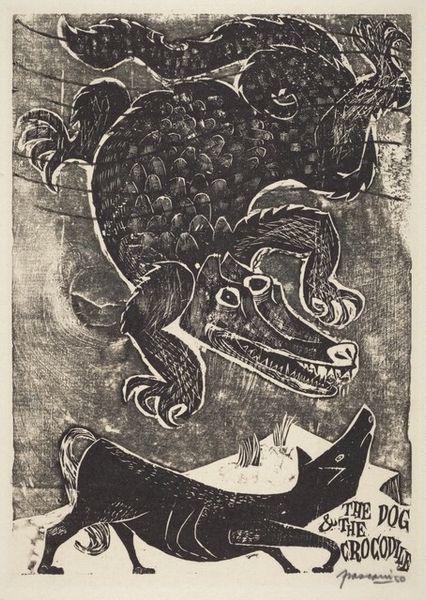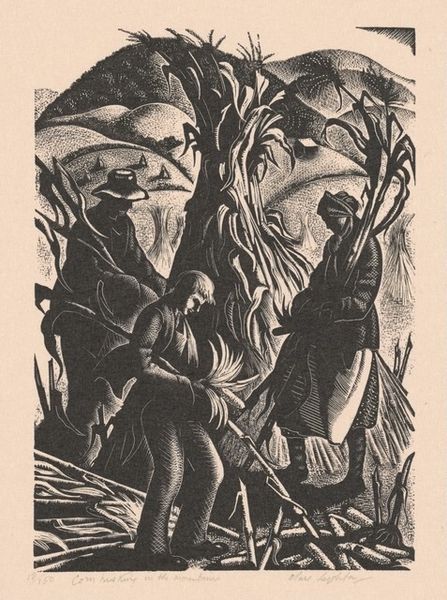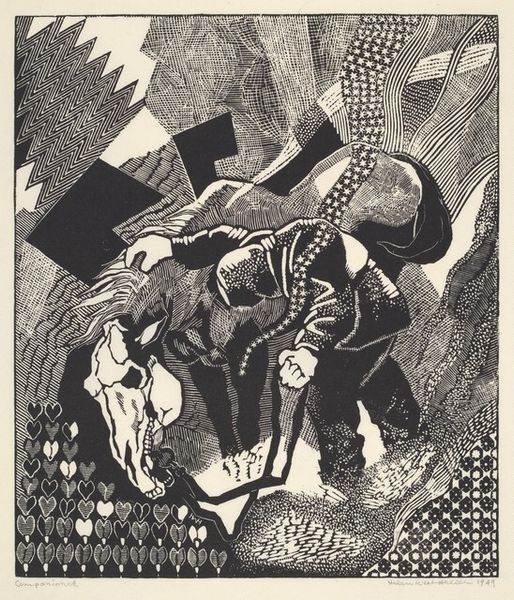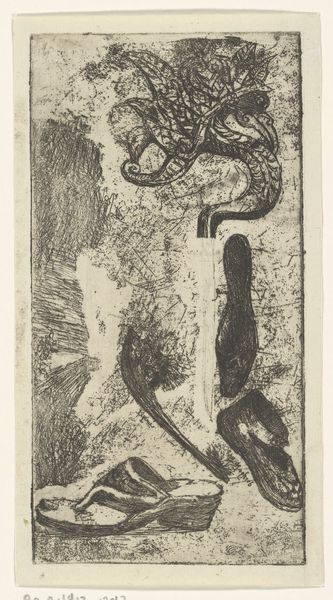
drawing, print, ink, woodcut
#
drawing
#
ink drawing
#
narrative-art
#
pen drawing
# print
#
figuration
#
ink
#
woodcut
Copyright: National Gallery of Art: CC0 1.0
Editor: This is Antonio Frasconi’s 1950 woodcut print, "The Dog and the Sheep." The stark contrasts and dense composition make it feel almost claustrophobic, and quite ominous. What social commentary might Frasconi be offering here? Curator: Good eye. Given Frasconi’s well-known commitment to social justice, this piece likely critiques power dynamics within society, possibly reflecting post-war anxieties. Think about the Cold War: the sheep, a symbol of docility, is threatened by predatory forces like the dog and the hawk, maybe representing oppressive regimes or ideologies. Editor: That’s a compelling interpretation. Is it typical for artists to use animal allegories in that period to speak of social issues more freely? Curator: Precisely. Using animal figures was a way to bypass direct political censorship, creating distance while still offering potent critique. Woodcut, with its bold lines and limited tonal range, visually reinforces that stark social division, the “us vs. them.” Do you notice how the dense texture almost suffocates the image? Editor: Yes, that texture adds to the feeling of anxiety. What role did printmaking play in disseminating such critiques? Curator: Printmaking allowed for wider distribution of these ideas to a larger public, escaping the confines of elite galleries and museums. Artists like Frasconi saw printmaking as a democratic tool for social change, for instance in unions and in marginalized populations such as indigenous people in South America. Editor: I hadn't thought of the accessibility of printmaking in that context. Curator: Thinking about accessibility changes our entire understanding of this work and its role, don’t you think? Editor: I certainly agree. The print takes on an extra layer of meaning when considered within its broader historical and social context, beyond merely its artistic merit. Thanks.
Comments
No comments
Be the first to comment and join the conversation on the ultimate creative platform.
